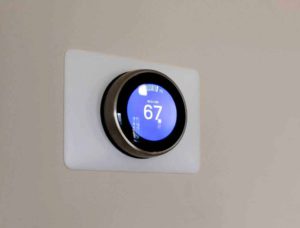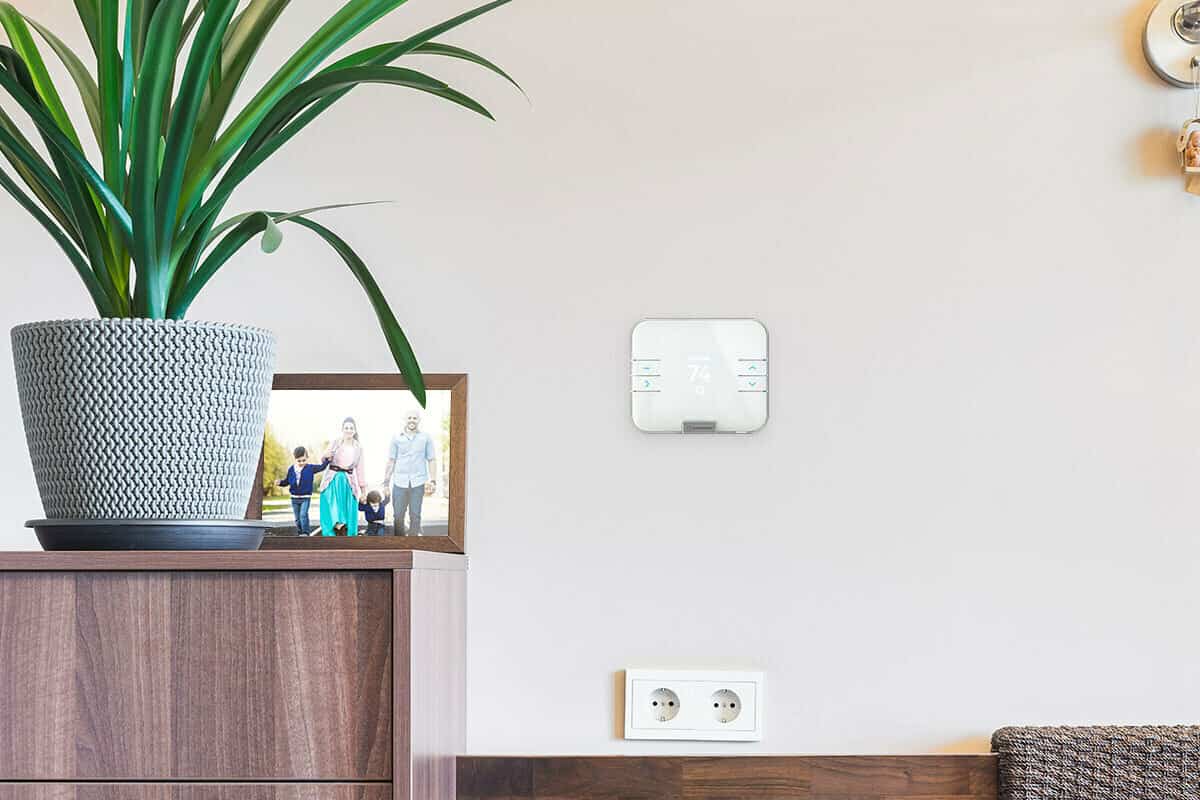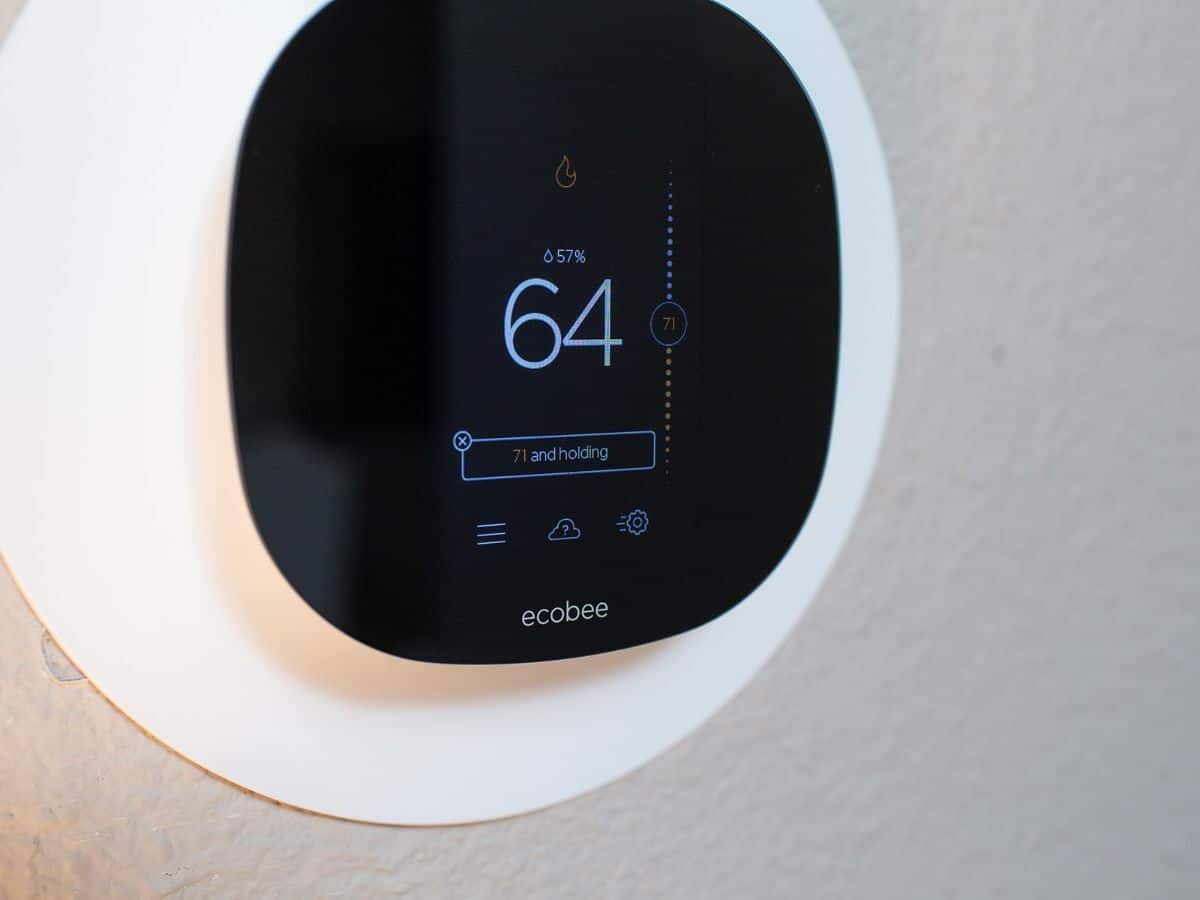With our current advancements in technology, we’re always looking towards the next big thing that can help our homes be more efficient and save us money. One product that is being introduced into homes and apartments are smart thermostats. With a price tag of over $100, you want to make sure that the product you’re buying is doing what is advertised. So, do smart thermostats save money?
Yes, they do. How do smart thermostats save money? Smart thermostats work to lower your bills in a few different ways.
What is a Smart Thermostat?
When smart thermostats first came on the market in 2007, their capability was connecting to the WiFi. Smart thermostats have been completely revolutionized since their initial beginnings. Now, you’ll find that the typical smart thermostat can:
- Connect to the WiFi
- Work through an App on a smartphone
- Compatible with third party sources, such as Amazon Alexa or Google Home.
- Know when you are home based off of motion detection.
- Adjust to your schedule. It will know the average schedule of when you’re at home and when you’re gone.
- Know the weather to make adjustments to conserve energy
- Adjust from anywhere, with a touch of a button.
- Controlled through a touch screen, making it higher tech.
- Support geofencing to get an idea of your location through your cell phone location.

How Do Smart Thermostats Save Money?
With the above capabilities, you don’t have to worry about paying for your empty house to stay cool. This is because your thermostat can track your daily schedule to adjust air. For instance, if you work from out of your house, your thermostat won’t cool or heat your home as if you were there.
Using Motion Detectors To Know Where You Are
Having motion detectors set up in your home allows the thermostat to see where you are, or even if you’re at home at all. If there hasn’t been any motion detected in a period of time, the thermostat will adjust to an “away” setting, keeping your home at a different temperature to save you money.
Smart thermostats also use geofencing. Geofencing is an invisible border around your home. Whenever you enter or exit that geofence, your thermostat will automatically adjust. Your smartphone will help distinguish when you are within that border, so this is an ideal feature for people who have a different day-to-day lifestyle.
Geofencing saves your home on energy when you’re out of the house. It also ensures that when you’ve entered the border, your air conditioning or heating will turn on, so you always walk into the perfect temperature home.

Adjusting The Temperature From Wherever You Are
We often rush out of the house in the morning, hands full, and maybe forget to adjust our thermostat. There’s no reason to cool your house to 70 degrees in the summertime if you’re sitting in your office.
Luckily, most of the smart thermostats are equipped with an app or website login so you can adjust the temperature, or turn the thermostat off, from wherever you are. Another example is if you’ve been on vacation for a week, you can have your thermostat off and when you’re close to home, you can electronically adjust your thermostat so you’re coming home to a comfortable temperature.
Recognizing Users Daily Schedules and Habits
When you first get your smart thermostat, set the temperature to what you find “comfortable.” This helps the thermostat understand what is a desired temperature, therefore when it senses that you’re home it will adjust accordingly. The thermostat will begin to understand the daily habits, such as leaving for the office, coming home, or being home for the whole weekend. Typically, we adjust our thermostats at those times when we first come in or leave, so it starts to register those habits and does it for you.

How Much Can You Save?
On average, the US Department of Energy estimates that our largest energy contributions are caused from heating and cooling. Finding a thermostat that has a capability to lower energy bills for your household can also help the overall electricity usage in America.
Nest anticipates that users who have their Nest Learning Thermostat can save 10% to 12% on their heating bills and 15% on their cooling. This averages out to $131 to $145 each year. With the cost of the Nest Learning Thermostat at $249, your investment has paid for itself in under two years.
A study conducted in Indiana found that out of 700 Nest thermostats and 700 manual programmable thermostats, the Nest provided lower energy costs for both heating and cooling. The study included two different energy companies, Nipsco and Vectren.
For cooling, Nest users had 16.1% reduction with Nipsco and 13.9% reduction with Vectren. For heating, Nest users had 13.9% reduction with Nipsco and 12.5% reduction with Vectren.
Standard programmable thermostats had a 7.8% reduction with Nipsco, and 5% with Vectren. The results of the study found significant savings for the customers who were using the smart thermostat.
Product Spotlight: ADC 2000
Alarm.com’s thermostat, The ADC 2000 has great features to help you save money.
This thermostat knows when you have left the house through security panels. Instead of having motion detectors to gauge if someone is in the house, the ADC 2000 will know you’ve left before your car is out of the driveway. The thermostat also has geofencing services as another method of location. This way, the thermostat will adjust quicker than other thermostats, allowing for more savings. The ADC 2000 also reads window sensors, so if you open your window, your thermostat will automatically turn off.

Ready For a Smart Home Upgrade? We’re ONIT.
For more than a decade, ONIT has worked to improve homes through different integrations. If you’re ready to make your house smarter with a money saving thermostat- let us find you the best model and install it for you! To find out more, give us a call today at 1-833-433-0331 to get the process started.



